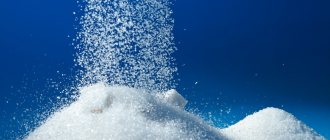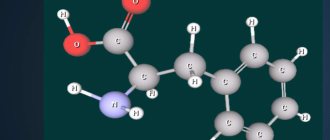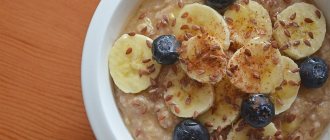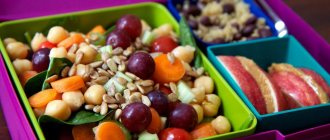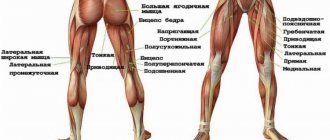Carbohydrates are natural organic substances. Their formula contains carbon and water. Thanks to these elements, the body draws the energy it needs to maintain normal functioning. Depending on their chemical structure, carbohydrates can be simple or complex.
What are carbohydrates
Carbohydrates are the main ingredient in most foods and serve as a source of energy for the human body. Depending on the number of structural units, carbohydrates are simple and complex.
The first category is also called fast carbohydrates. They are easily digestible and lead to a rapid increase in blood sugar. This means that the substances have a high glycemic index.
Such elements provoke metabolic disorders and cause weight gain. Systematic consumption of foods containing simple carbohydrates not only leads to obesity, but also causes many other diseases.
Complex carbohydrates, which include starch and fiber, contain many linked saccharides. They contain a large number of structural elements. Food with such carbohydrates is considered very healthy. During the digestion process, it gradually saturates the body with energy. This gives a long-lasting feeling of fullness.
Calculation of carbohydrate norms
The importance of carbohydrates in human life is so high that it is almost impossible to live without them, so you need to know your consumption rate. As mentioned above, substances in this category can be simple or complex. The second group includes mainly various sugars. They are not useful, and in large quantities they are harmful to humans.
Therefore, try to keep the amount of sugar in your diet no more than 10% of your total calories. Only people engaged in heavy physical labor can make an exception for themselves.
However, the consumption of simple carbohydrates should also be regulated. Remember that there are certain standards that every person must adhere to, regardless of whether he plays sports or not.
In particular, it is believed that young people should eat 5 g of carbohydrates per 1 kg of body weight daily. And if a man or woman engages in sports or heavy physical labor, this value can be increased to 8 g.
It is undesirable to exceed the amount of carbohydrates, but you should not reduce it either. Otherwise, the body begins to break down fats and proteins, which can ultimately lead to intoxication. Therefore, if for any reason you want to switch to a low-carb diet, consult your doctor first.
The biological significance of carbohydrates for humans is very important, but in moderation. Reduce the amount of sugar and fiber in your diet gradually so as not to cause injury to your body and help it get used to the new metabolism.
Functions of carbohydrates in the body
The key function of carbohydrates in the body lies in their transformation into energy. ATP, which is a universal source of energy, contains the monosaccharide ribose. ATP is formed due to glycolysis. This process involves the oxidation and breakdown of glucose into pyruvic acid.
Glycolysis occurs in several stages. Carbohydrates are oxidized to water and carbon dioxide. This process is accompanied by the release of energy.
The main functions of carbohydrates include the following:
- Structural.
Polysaccharides are the material for supporting elements. Cellulose, which is part of the structure of cell walls, gives plants rigidity. Fungal cells contain chitin. - Energy.
Carbohydrates represent the main source of energy. The breakdown of 1 g of carbohydrates releases 17.6 kJ of energy. - Protective.
The thorns and thorns of plants are made up of these elements. - Storage.
Carbohydrates are stored in the form of starch in the structure of plants and glycogen in animals. When there is a lack of energy, these substances are broken down into glucose. - Osmotic.
Substances help regulate osmotic pressure. - Receptor.
The elements are present in the composition of cellular receptors.
Individual carbohydrates form complex structures with protein elements and lipids. As a result, glycoproteins and glycolipids are formed. These elements are present in the composition of cell membranes.
Summarize
- Carbohydrates perform several basic functions in your body.
- They provide you with energy for everyday tasks and are the main source of energy for your brain.
- Fiber is a special type of carbohydrate that promotes good digestion and may reduce the risk of developing cardiovascular disease and diabetes.
- In general, carbohydrates perform these functions for most people. However, if you follow a low-carb diet or eat little food, your body will use alternative methods to produce energy and fuel your brain.
Tags: carbohydrates
- Related Posts
- What are tannins in tea and do they have beneficial properties?
- When is the best time to take protein?
- Quercetin: what it is, properties, products, dosage, side effects
« Previous entry
Classification of carbohydrates
Carbohydrates come in many varieties. This should definitely be taken into account when planning your diet. The classification of carbohydrates is divided into simple and complex or fast and slow.
Simple or fast carbohydrates include the following:
- Monosaccharides.
This category includes galactose, fructose, and glucose. These components are present in berries, fruits, and honey. Such substances are quickly absorbed and sharply increase blood sugar levels. As a result, glycogen is formed in the tissues, which is required for energy. When it is in excess, the substances form fatty deposits. To avoid negative consequences, the amount of monosaccharides should be no more than 25-35% of the total carbohydrates eaten during the day. - Disaccharides.
These mainly include sucrose, which includes regular sugar, and maltose. This component is present in malt, molasses, and honey. It is also found in milk sugar.
Complex or slow carbohydrates include polysaccharides. These substances include a large number of monosaccharides. They take a long time to digest and have a less sweet taste than simple carbohydrates. The main polysaccharides include the following:
- Starch and glycogen. These substances are present in cereals, legumes, potatoes, and corn.
- Cellulose. The element is found in cereals, seeds, vegetables, fruits, and bran.
- Cellulose. Ingredients include lettuce leaves, apples, pears, and carrots.
- Pectin. The substance is present in carrots, cabbage, citrus fruits, and strawberries.
- Inulin. The element is found in chicory, onions, barley, and garlic.
The main advantage of complex carbohydrates is that they slowly saturate the body. Thanks to this, the feeling of hunger does not occur prematurely.
Simple carbohydrates
These carbohydrates are characterized by a simple structure. Thanks to this, they are quickly absorbed in the body. With a lack of physical activity, substances increase blood sugar. After this, it quickly falls, which provokes a feeling of hunger. Unspent carbohydrates are transformed into fat deposits. At the same time, their deficiency causes fatigue and increased drowsiness.
Simple carbohydrates are divided into 2 categories - monosaccharides and disaccharides.
Monosaccharides include:
- glucose - it is found in most fruits and berries. The component is also present in honey and green plant fragments;
- fructose - this substance is present in honey, berries, and fruits. It is also found in the seeds of certain plants;
- galactose is the only monosaccharide that is of animal origin. It is part of lactose, or milk sugar.
Disaccharides are considered the most important for human nutrition. The molecule contains glucose. The second sugar can be fructose, galactose or glucose.
There are these types of disaccharides:
- sucrose - it includes glucose and fructose. This category includes sugar from cane or beets;
- maltose - the substance contains 2 glucose residues. It is present in licorice sugar;
- Lactose is an element that includes glucose and galactose and is found in the milk of mammals.
List of healthy foods that contain fast carbohydrates:
- potato;
- pumpkin;
- corn;
- a pineapple;
- banana;
- melon;
- watermelon;
- White rice;
- nuts;
- dried fruits.
However, there are harmful foods that should be completely avoided.
These include:
- baked goods made from premium flour;
- candies;
- sweet carbonated drinks;
- snacks;
- alcohol;
- cakes, waffles, cookies.
Complex carbohydrates
These products are based on polysaccharides - starch and cellulose. Such substances ensure normal digestion and satiate a person for a long time.
The list of foods that contain a lot of complex carbohydrates includes the following:
- all vegetables - with the exception of potatoes and pumpkin;
- citrus fruit;
- berries;
- apples and pears;
- apricots;
- millet, pearl barley, buckwheat, oatmeal;
- legumes
Beverages in this category include unsweetened tea and coffee. There are also some complex carbohydrates in meat and fish. They are found in eggs, kefir, and cottage cheese.
Fast carbohydrates
Fast carbohydrates are considered simple and include only 1-2 molecules:
- 1 molecule contains monosaccharides;
- 2 molecules are present in disaccharides.
All fast carbohydrates have a high glycemic index. It exceeds 70. Such substances have a sweet taste and are perfectly soluble in water.
The breakdown of simple carbohydrates begins in the oral cavity. They penetrate the blood very quickly. Within a few minutes after consumption, glucose levels increase significantly. At the same time, it stays at a high level for no more than 30-40 minutes. Then just as suddenly it decreases.
Fast carbohydrates are required to restore energy after difficult physical activity or stress. They help bring a person out of a hypoglycemic coma.
However, you should not constantly use such substances. This provokes depletion of the pancreas and causes it to function under stress. It is an excess of simple carbohydrates that provokes the development of type 2 diabetes. When you eat simple carbohydrates at night, they transform into fats.
Foods with a high glycemic index include the following:
- sugar, honey;
- baked potatoes, mashed potatoes;
- boiled carrots and pumpkin;
- bananas, melons, watermelons, pineapples;
- confectionery;
- dates;
- bakery products.
Glycemic index
To determine the rate of breakdown and absorption of carbohydrates, an indicator called the glycemic index has been proposed. Glucose is taken as the starting point. When a product with a high glycemic index enters the body, the blood sugar level rapidly increases, the pancreas releases insulin, it lowers the blood sugar level and the excess sugar is converted into fat. This leads to excess body weight, and there is a risk of diabetes and hypertension.
When we eat foods containing a low glycemic index, they are digested slowly and broken down into glucose also slowly, without causing an increase in blood sugar levels. The pancreas produces insulin slowly because it does not process excess sugar and the feeling of fullness lasts longer.
From this we can conclude: the correct carbohydrate diet should consist mainly of carbohydrates with a low glycemic index.
Slow carbohydrates
Slow carbohydrates are also called complex carbohydrates. They include 3 or more molecules. Therefore, these substances are characterized by slow breakdown. They are usually absorbed in the intestines. Complex carbohydrates include dextrin, starch, cellulose, glycogen, and glucomannan.
Eating slow carbohydrates promotes a smooth flow of glucose into the human body. In this case, no peaks or jumps are observed. It is complex carbohydrates that satiate a person for a long time, maintain a stable mood and make him more balanced.
The glycemic index of such products ranges from 0-40.
These include the following:
- durum wheat pasta;
- brown rice, barley, pearl barley, buckwheat, millet;
- legumes;
- fruits - peaches, oranges, cherries, apples, pears;
- vegetables and herbs - onions, spinach, zucchini, peppers, tomatoes, cabbage;
- mushrooms.
Structure of carbohydrates
The structure of carbohydrates includes several carbonyl and hydroxyl groups.
Depending on their structure, substances are divided into 3 categories:
- monosaccharides;
- oligosaccharides;
- polysaccharides.
Monosaccharides are the simplest sugars that contain only 1 molecule. They have several groups that differ in the number of carbon atoms in the molecule. Monosaccharides containing 3 carbon atoms are called trioses. If the composition contains 5 atoms, they are called pentoses, if 6 - hexoses.
Pentoses, which are present in nucleic acids, are considered the most valuable for living organisms. Hexoses, which make up polysaccharides, are also of great importance.
Oligosaccharides contain 2-10 structural elements.
Depending on the quantity there are:
- diosis;
- trioses;
- tetraose;
- pentasaccharides;
- hexasaccharides.
The most significant are disaccharides, which include sucrose, maltose and lactose, as well as trisaccharides. This category includes melicitose, raffinose, and maltotriose.
Olisaccharides can contain homogeneous and heterogeneous structures.
Depending on this, the following types are distinguished:
- homooligosaccharides - all molecules have the same structure;
- heterooligosaccharides - molecules differ in structure.
Polysaccharides are considered the most complex carbohydrates. They include many monosaccharides - from 10 to several thousand.
Such substances include the following:
- starch;
- chitin;
- glycogen;
- cellulose.
Polysaccharides have a more rigid structure than oligosaccharides and monosaccharides. They do not dissolve in water and do not have a sweet taste.
Composition of carbohydrates
The composition of carbohydrates is divided into the following categories:
- Monosaccharides
- contain 1 monomer unit and are not hydrolyzed to form simpler carbohydrates. Monomers are varied. This is due to the difference in structure. Typically, monosaccharides in living organisms are ring carbon chains that contain 5 or 6 carbon atoms. The most important monosaccharides are ribose and deoxyribose, which are present in nucleic acids. They also include glucose as a source of energy and fructose. - Disaccharides
- include 2 monomer units. We can say that they consist of 2 monosaccharides. Substances combine through hydroxyl groups. In this case, water is separated. The most famous disaccharide is sucrose. Its molecule includes glucose and fructose residues. 2 glucose residues are part of maltose. - Polysaccharides
- include more than 10 monomer units. This category includes starch, chitin, cellulose, etc. Starch and glycogen accumulate in organisms as reserve nutrients. Starch has a less branched structure than glycogen. Cellulose forms the walls of plant cells. Due to this, it realizes structural and protective functions. Chitin solves similar problems in fungi and animals.
Basic functions of carbohydrates
Proteins, fats and carbohydrates
It is necessary to analyze in more detail what functions carbohydrates perform in living organisms.
Energy
This is the main function of simple carbohydrates in the cell. When a cell is exposed to carbohydrates, it begins to actively function, release energy, and grow. Metabolic processes occur in it. Any animal or person grows precisely thanks to this function. In animals, for example, carbohydrates form the glycocalyx, so it is fair to say that it is one of their main structural materials. The process begins with oxidation, and it is worth keeping in mind that this can occur both when the substance is exposed to oxygen and in a completely oxygen-free environment. If we consider plant organisms, then here too there are carbohydrates presented in the form of starch.
In general, the liver under normal conditions can store up to 10% of all glycogen consumed, which makes life much easier and calmer. A lack of glycogen can provoke its search in other organs and, consequently, its uneven distribution throughout the body and various diseases. The most understandable examples of the manifestation of the energy function are glucose, sucrose and fructose. Surely, every person has noticed more than once how his body reacts to the consumption of sweets: it seems to be immediately filled with strength, complete restoration and renewal of not only physical but also moral strength occurs, the brain begins to work faster.
In addition, other processes are activated in the body, which are also important to list:
- gas exchange;
- excretory capacity;
- circulation;
- plastic exchange.
As a result, we can conclude that almost every type of process in the body cannot occur without the participation of this important “bolt”.
Almost every type of process in the body cannot occur without the participation of carbohydrates
Defensive ability
This is a component that prevents foreign elements, substances, and so on from entering any organ. The protective circuit of any internal organ is built in such a way that when exposed to some external irritant, it will most likely secrete a special liquid - mucus. This is where carbohydrates perform their function.
As part of the mucus, they form, in a sense, armor that does not allow various conditions and irritants of the external environment to penetrate inside, injure the organ, or cause infection. In addition, they also save from mechanical damage. In these situations, carbohydrates literally come to the defense of the organ, which was injured as a result of the “attack” of unfavorable elements.
On a note! Biology claims that with a sufficient amount of carbohydrates in the human body, the likelihood of diseases caused by the entry of various viruses and bacteria into the blood is significantly reduced. When carbohydrates interact with fats, the protective function is enhanced.
Structural function
As the name implies, this function involves the formation of some kind of structure, that is, construction. It follows from this that the construction of almost every cell in the body depends on how many carbohydrates it currently has. This support function structures the work of the entire organism.
It is important to consume as many foods containing carbohydrates as possible in order to restore and normalize the functions that ensure uninterrupted growth of the body, muscle function, and, in general, the whole body in general.
Important. The main thing you need to pay attention to is that for the best effect in the construction of cells, carbohydrates should not be consumed separately from various vitamins and minerals, but together with food intake.
Particular attention, of course, should be paid to proteins, since it is in interaction with them that carbohydrates are better absorbed and fill weakened cells, which creates a completely different level of interaction between carbohydrates and the human body.
Storage function
This function is very similar to security. The body is able to accumulate carbohydrates so that in extreme situations (if carbohydrate reserves are not replenished for at least 5 hours), a reserve in the layer of subcutaneous fat or elsewhere comes to the rescue and saves a person from starvation. That is, carbohydrates will not allow a person to immediately die of hunger if he is suddenly left without food for some time. At the right moment, the backup function will work and deliver the necessary microelements to the vital organs.
The body is able to store carbohydrates
Signal function
Understanding what carbohydrates are needed for, one cannot fail to note the special signaling function that they perform. This is the ability of carbohydrates to serve as a means of connection between tissues and fluids in the body, to ensure the functioning of intercellular substances, to regulate the transfer of one substance to another, as well as the vital activity of each cell. Carbohydrates provide the body's response to external stimuli, which helps determine whether a particular stimulus is dangerous or not. Without this function, the likelihood of injury would sharply increase, since the cells would not have time to respond to external stimuli in time. This also saves from the spread of diseases, since a timely signal is perceived in time by the brain, which blocks the spread of infection.
Construction
This is a separate class of functions performed by carbohydrates. Perhaps it is also one of the main ones. Inulin is one of the components of the cell. This occurs in both plant and animal cells. In plant cells it forms chitin, and in animal cells it forms glycocalyx.
It plays a special role in the structure of the stomach. If inulin functions well, then problems with the gastrointestinal tract should not arise. Working in a cell, glycogen perceives irritations from the environment and transmits them to the cell, which then independently regulates its work. Thanks to carbohydrates, the human body is what it is, and each cell contains what it has.
Transport
The transport task of carbohydrates is to transfer information from one cell to another. At the same time, carbohydrates do not transmit all the information, but only that which is safe and cannot harm either the receptor or the donor.
The transport task of carbohydrates is to transfer information from one cell to another
The transfer of various substances cannot be carried out if they contain at least a hint of any infection that can infect the entire body. This function is of paramount importance, since the body is a system in which everything is interconnected, and carbohydrates emphasize how connected all cells are. A deficiency of this element can lead to various unpleasant diseases, which is why you need to monitor the level of carbohydrates in the blood.
Regulatory
Carbohydrates form systems of glycoproteins - membrane receptors responsible for osmotic pressure in the body. It is formed under the influence of glucose and depends on its level. As a result, carbohydrates affect digestion, improve the absorption of various beneficial substances, ensuring their compatibility with other components of a particular cell or organ. They also regulate osmotic pressure in the blood and maintain the stability of homeostasis.
Support function
Inulin is directly involved in the creation of various supporting structures, that is, what the cell itself is formed from. Such building elements are chitin and cellulose. This function is called the support function because it describes how important the inulin base is.
Properties of carbohydrates
The main properties of carbohydrates include the following:
- Molecular mass.
Among carbohydrates you can find very simple elements, the molecular weight of which is approximately 200, and giant polymers. Their molecular weight reaches several million. - Solubility in water.
Monosaccharides easily dissolve in water and form syrups. - Oxidation.
This process leads to the production of the corresponding acids. For example, the oxidation of glucose with an ammonia solution of silver oxide hydrate leads to the formation of gluconic acid. - Recovery.
When reducing sugars, it is possible to obtain polyhydric alcohols. Hydrogen in nickel, lithium aluminum hydride, etc. act as a reducing agent. - Alkylation.
This term refers to the formation of ethers. - Acylation.
This concept includes the formation of esters.
Digestion of carbohydrates
Among carbohydrates, the human body primarily digests polysaccharides - starch from plant products and glycogen, which is present in animal foods.
Polysaccharides are broken down by digestive enzymes into building blocks - free D-glucose. This process occurs under the influence of salivary amylase and is accompanied by the formation of a mixture of maltose, glucose and oligosaccharides.
Digestion of carbohydrates continues and ends in the small intestine. This process is influenced by pancreatic amylase, which enters the duodenum.
The hydrolysis of disaccharides is triggered by enzymes that are present in the outer layer of epithelial cells lining the small intestine. In the epithelial cells of the small intestine, partial transformation of D-fructose, D-galactose, D-mannose into D-glucose occurs. A mixture of simple hexoses is absorbed by epithelial cells and enters the liver through the bloodstream.
Obtaining glucose
Starch hydrolysis
In the presence of acids, starch is hydrolyzed:
(C6H10O5)n + nH2O → nC6H12O6
Synthesis from formaldehyde
The reaction was first studied by A.M. Butlerov. The synthesis takes place in the presence of calcium hydroxide:
6CH2=On → C6H12O6
Photosynthesis
In plants, carbohydrates are formed as a result of the reaction of photosynthesis from CO2 and H2O:
6CO2 + 6H2O → C6H12O6 + 6O2
| Fructose is a structural isomer of glucose. This is a ketone alcohol (ketose): it can also exist in cyclic forms (furanose). |
It contains six carbon atoms, one ketone group and five hydroxyl groups.
| Fructose | α-D-fructose | β-D-fructose |
Fructose is a crystalline substance, highly soluble in water, sweeter than glucose.
It is found freely in honey and fruits.
The chemical properties of fructose are associated with the presence of ketone and five hydroxyl groups.
Hydrogenation of fructose also produces sorbitol.
| Disaccharides are carbohydrates whose molecules consist of two monosaccharide residues connected to each other through the interaction of hydroxyl groups (two hemiacetal or one hemiacetal and one alcohol). |
Metabolism of carbohydrates in the body
The metabolism of carbohydrates in the human body is based on the processes described below:
- The brain does not have a glycogen reserve, so it constantly requires glucose. Carbohydrates are the only source that helps cover the energy costs of the brain. It is the brain tissue that absorbs 70% of the glucose that is released by the liver.
- During active work, muscle tissue receives large amounts of glucose from the blood. In them, this substance is transformed into glycogen. When glycogen breaks down, enough energy is available for muscle contraction.
- The level of glucose in the blood is regulated by hormones - glucagon, somatotropin, cortisol, insulin, adrenaline. Insulin helps reduce blood glucose when it rises, facilitates its entry into cells and ensures the deposition of the substance in tissues in the form of glycogen. When blood glucose parameters decrease, somatotropin, cortisol, adrenaline and glucagon inhibit the uptake of glucose by cells. Due to this, glycogen is transformed into glucose.
Carbohydrates in human nutrition[edit | edit code]
Source: “Basics of rational nutrition”
.
Author
: L. I. Nazarenko;
College of Fitness and Bodybuilding named after. Ben Bader Ed.
St. Petersburg: Renome, 2014.
Carbohydrates are polyhydric aldehyde and keto alcohols. Carbohydrates are natural organic compounds consisting of carbon and water molecules that are synthesized in plants under the influence of solar energy. Carbohydrates are fuel that, continuously “burning,” provides the body with energy. Carbohydrates are an energy pantry: the body is able to store carbohydrates in reserve in the form of glycogen, which is stored in the liver and muscles. Carbohydrates are involved in the construction of non-essential amino acids; it is a material for cell growth; This is, finally, food for the brain - in the absence of carbohydrates, reaction speed and mental abilities decrease, and sometimes a person simply “switches off.”
WHO experts in 2002 proposed the following classification of carbohydrates:
- sugars (contain 1-2 monomers): monosaccharides (glucose, fructose, galactose, ribose, deoxyribose);
- disaccharides (sucrose, maltose, lactose);
- oligosaccharides (contain 3-9 monomers): maltodextrins;
- polysaccharides (contain more than 9 monomers): starch (amylose, amylopectin);
- glycogen;
- inulin (fructose);
- non-starch polysaccharides (cellulose, hemicelluloses, pectin).
Carbohydrates make up the bulk of the diet, providing 50-60% of its energy value. Therefore, they are the main supplier of energy for the body. When 1 g of carbohydrates is burned in the body, 4 kcal of energy is produced. The body's carbohydrate reserves are very limited, and with intense work they are quickly depleted. Therefore, carbohydrates must be supplied to the body daily and in sufficient quantities.
Incoming carbohydrates are converted by the body into glucose, which circulates in the circulatory system and, “burning,” continuously supplies the body with energy and glycogen, which is stored as an energy reserve. According to the generally accepted classification, carbohydrates are divided into simple and complex. In everyday understanding - “fast” and “slow”, “harmful” and “useful”.
Simple carbohydrates can provide the body with energy in the shortest possible time. However, the energy surge they caused just as quickly fades away. Complex carbohydrates supply the body with energy more evenly and continuously. Simple carbohydrates are, first of all, confectionery, honey, fruits, and dairy products. Complex - most cereals (including muesli), pasta, vegetables, baked goods. The general rule is to limit your intake of simple carbohydrates, giving preference to complex ones.
A special feature of simple carbohydrates is their ability to sharply increase blood glucose levels. The body’s reaction is immediate: a powerful release of insulin occurs in the pancreas - a hormone designed in this case to neutralize excess glucose in the blood, otherwise it will “thicken”. The main task of insulin is to deliver glucose to the cells that need it, in particular muscle cells.
Body tissues have a limit for glucose absorption. By getting rid of its excess, insulin promotes its conversion into triglycerides, the main material of adipose tissue. Simple carbohydrates that are not used as sources of energy usually settle in the body in the form of hated subcutaneous fat. This is the reason obesity is so common among people who do not exercise. Their muscles practically do not need energy supply, and almost all the glucose received from food is converted into fat.
However, this does not mean that simple carbohydrates (meaning, of course, unrefined ones - fruits, fruit juices, honey) should be ruthlessly expelled from the daily diet.
Their time comes in the first 30-40 minutes after training. During this period, muscles are especially susceptible to glucose, as they need energy for recovery, and simple carbohydrates will come in handy.
Complex carbohydrates, among which starch plays a decisive role in supplying the body with energy, take longer to digest and do not cause an abrupt increase in glucose levels. Accordingly, there is no need for the secretion of additional insulin, and the body manages to process glucose that comes in small doses into glycogen, from where it later draws energy to support vital processes. The total amount of glycogen in the body is about 500 g, of which a third is in the liver, the rest in the muscles. The glycogen reserve is designed for 12-18 hours, and is “held” in case of a sudden cessation of glucose supply. However, partial release of glycogen occurs constantly - during the period of overnight “fasting”, in the intervals between meals, during intense training.
So, just three hours after eating, glycogen stores begin to be used up, and intense training with weights can empty glycogen stores within 20-30 minutes.
Fiber (dietary fiber, ballast substances), which is found in large quantities in plant foods, is practically not absorbed by the body. Fiber plays an extremely important role in ensuring the performance of the body. Firstly, fiber forms water-soluble complexes in the intestines that bind and remove toxic substances from the body. Secondly, it slows down the absorption of simple carbohydrates, “releasing” glucose into the blood in small, even portions. Thirdly, it stimulates intestinal motility and helps normalize its microflora. Fourthly, it pacifies the appetite because, by swelling, it fills the stomach and creates a feeling of fullness.
Fiber is found in legumes (beans, legumes, peas, lentils, soybeans), cereals (buckwheat, oatmeal, pearl barley, corn, millet), brown rice, baked goods made from wholemeal flour and bran, durum wheat pasta, vegetables and fruits The optimal source of fiber is low-calorie vegetables, such as carrots, cabbage, onions, cucumbers, broccoli, and asparagus. If calorie content is not critical, you can stick to fruits.
Despite the fact that the vast majority of carbohydrates are eventually converted into glucose, the rate of this process varies and depends on the foods eaten. The change in blood glucose levels expected after eating a particular product is characterized using the glycemic index. In other words, the glycemic index reflects the rate of conversion of carbohydrates contained in food into glucose. The level of glucose in the blood is the main parameter that determines the body's need for an influx of nutrients. If the glucose level is below normal, the “time to eat” signal is triggered. If it exceeds the permissible value, the “unclaimed” glucose is converted into subcutaneous fat.
The higher the glycemic index of the product, the stronger the subsequent concentration of glucose in the blood, requiring a significant portion of insulin, which, in turn, will send excess glucose to fat depots. Typically, foods that have a high glycemic index are simple carbohydrates, such as baked goods.
The glycemic index depends on a number of factors, which are highly desirable to take into account when creating a diet.
- Type of carbohydrates
. Glucose is absorbed extremely easily and quickly. Fructose is converted into glucose as a result of a rather long chain of biochemical reactions, and therefore has a relatively low glycemic index. Sucrose and lactose break down into glucose molecules quite easily, thereby providing instant
high concentration in the blood. Starch is digested more slowly, and there is no danger of explosive distribution of glucose. Accordingly, starch replenishes glycogen stores, while simple carbohydrates mostly “sculpt” the fat layer. Practical advice
: do not overindulge in fruit, especially in the evenings (the most “dangerous” include bananas, grapes, dates, etc.), do not abuse dairy products and avoid refined ones.
- Duration of cooking. The rate of starch breakdown increases sharply when heated. The glycemic index, accordingly, is the same, as is the ability of the product to turn into subcutaneous fat. Practical tips: pasta should be left slightly undercooked (it is this culinary trick that allows Italians to consume pasta in unlimited quantities without the risk of becoming overweight); Soak cereals, such as buckwheat, for several hours before cooking - and you will have to stand at the stove much less, and the glycemic index will not exceed the level stated in dietary reference books.
- Degree of product grinding
. The finer the flour is, the higher the glycemic index of the bread made from it.
Practical advice
: you should prefer bread made from wholemeal flour, abandon mashed potatoes in favor of jacket potatoes and do not convert meat to minced meat.
- The content and ratio of proteins, fats and carbohydrates in the product, primarily fiber. Fiber, proteins and fats slow down the absorption of simple carbohydrates - the residence time of food in the gastrointestinal tract increases, and glucose enters the body in a slower manner.
Practical advice
: It is advisable to serve honey in honeycombs; do not overuse freshly squeezed juices that lack fiber.
You can improve even a banal sandwich by providing it with all the characteristics of a fitness dish; Instead of sausage on a wheat bun, snack on a piece of wholemeal rye bread and half a boiled chicken breast, supplemented with a slice of cucumber and a bunch of parsley. Recommended ratio of carbohydrates in the diet
: 65-70% - complex carbohydrates, 25-30% - simple unrefined and about 5% - fiber.
Carbohydrate content in foods[edit | edit code]
Carbohydrates are found mainly in plant foods.
Carbohydrate content in 100 g of edible portion of food
- Very large (65 g or more): granulated sugar, sweetened condensed milk, candy caramel, fondant candies, honey, marmalade, marshmallows, butter cookies, rice, pasta, jam, semolina and pearl barley, dates, raisins, millet, buckwheat and oatmeal, apricots, prunes;
- large (30-64 g): coffee with condensed milk and sugar, rye and wheat bread, beans, peas, lentils, chocolate, halva, cakes;
- moderate (11-29 g): sweet curd cheese, sweet whipped cream, ice cream, cocoa, almonds, protein-bran bread, wheat bran, potatoes, green peas, soybeans, beets, grapes, cherries, pomegranates, apples, juices fruit;
- small (6-10 g): sweet yoghurts, zucchini, cabbage, carrots, pumpkin, watermelon, melon, pears, peaches, apricots, plums, oranges, tangerines, strawberries, gooseberries, currants, blueberries, hazelnuts, cashews, lemonade;
- very small (2-5 g): milk, kefir, sour cream, cottage cheese, cucumbers, radishes, lettuce, green onions, tomatoes, spinach, lemons, cranberries, fresh mushrooms.
The daily requirement for carbohydrates is 4-5 g/kg of ideal body weight.
Recommended body weight values
, kg, in accordance with the height and width of the chest*
| Height, cm | Rib cage | Height, cm | Rib cage | ||||
| narrow | normal | wide | narrow | normal | wide | ||
| Men | Women | ||||||
| 156,0 | 49,3 | 56,0 | 62,2 | 152,5 | 47,8 | 54,0 | 59,0 |
| 157,5 | 51,7 | 58,0 | 64,0 | 155,0 | 49,2 | 55,2 | 61,6 |
| 160,0 | 53,5 | 60,0 | 66,0 | 157,5 | 50,8 | 57,0 | 63,1 |
| 162,5 | 55,3 | 61,7 | 68,0 | 160,0 | 52,1 | 58,5 | 64,8 |
| 165,0 | 57,1 | 63,5 | 69,5 | 162,5 | 53,8 | 60,1 | 66,3 |
| 167,5 | 59,3 | 65,8 | 71,8 | 165,0 | 55,3 | 61,8 | 67,8 |
| 170,0 | 60,5 | 67,8 | 73,8 | 167,5 | 56,6 | 63,0 | 69,0 |
| 172,5 | 63,3 | 69,7 | 76,8 | 170,0 | 57,8 | 64,0 | 70,0 |
| 175,0 | 65,3 | 71,7 | 77,8 | 172,5 | 59,0 | 65,2 | 71,2 |
| 177,5 | 67,3 | 73,8 | 79,8 | 175,0 | 60,3 | 66,5 | 72,5 |
| 180,0 | 68,9 | 75,2 | 81,2 | 177,5 | 61,5 | 67,7 | 73,7 |
| 182,5 | 70,9 | 77,2 | 83,6 | 180,0 | 62,7 | 68,9 | 74,9 |
| 185,0 | 72,8 | 79,2 | 85,2 | ||||
- At the age of over 30 years, an increase in body weight of 2.5-6.0 kg is allowed compared to the data in the table.
Normal body weight can be calculated using the formula
[Height (cm) x chest circumference (cm)] / 240
However, tables and formulas are unsuitable for determining ideal body weight in individuals with highly developed muscles (wrestlers, weightlifters, bodybuilders, etc.).
Bioimpedance analysis is currently considered the optimal and accessible method for assessing body composition, which determines the amount of fat, water and active cell mass in kilograms and percentages.
With great physical activity (hard work, sports), the need for carbohydrates increases to 8 g/kg body weight. Simple carbohydrates (sugars) should make up up to 10% of total carbohydrates.
Daily requirement of the adult working population for carbohydrates
, G
| Labor intensity group | Age, years | Men | Women |
| 1 | 18-29 | 358 | 289 |
| 30-39 | 335 | 274 | |
| 40-59 | 303 | 257 | |
| 2 | 18-29 | 411 | 318 |
| 30-39 | 387 | 311 | |
| 40-59 | Z66 | 305 | |
| 3 | 18-29 | 484 | 378 |
| 30-39 | 462 | 372 | |
| 40-59 | 432 | 366 | |
| 4 | 18-29 | 566 | 462 |
| 30-39 | 528 | 432 | |
| 40-59 | 499 | 417 | |
| 5 | 18-29 | 586 | — |
| 30-39 | 550 | ||
| 40-59 | 524 |
An increased amount of refined carbohydrates (sugar, confectionery, honey) in the diet contributes to increased cholesterol in the blood, the development of atherosclerosis, obesity, diabetes, and cholelithiasis. An excess of simple carbohydrates (more than 25% of daily calories) leads to a relative deficiency of vitamins B1, B2, PP, lipoic acid, and an increased need for proteins and microelements (Mn, Mg, Mo, Fe).
The glycemic index of foods reflects their ability to increase blood sugar after consuming an amount of the product that contains 50 g of carbohydrates.
The glycemic index of 50 g of pure glucose is taken as 100%. The value of the glycemic index of a product is not strictly constant; it depends on the technological processing of the product, the state of the human gastrointestinal tract, and the combination of foods eaten in one meal. The tables usually show the average values of this indicator.
There are several author's classifications of foods based on the glycemic index. For example, the French nutritionist M. Montignac (1997) divides all carbohydrates on this basis into “good” (with a glycemic index of less than 50) and “bad” (with a glycemic index of more than 50).
Glycemic indices of various foods
(glycemic index of glucose - 100%)*
| Carbohydrates with a high glycemic index ("bad" carbohydrates) | Carbohydrates with a low glycemic index ("good" carbohydrates) | ||
| Fried potatoes | 95 | Bran bread | 50 |
| Products made from premium wheat flour (bread, pasta, semolina) | 95 | Unprocessed rice grains (brown rice) | 50 |
| Peas | 50 | ||
| Mashed potatoes | 90 | Unprocessed cereals without sugar | 50 |
| Honey | 90 | Cereals | 40 |
| Carrot | 85 | Buckwheat | 40 |
| Cornflakes | 85 | Rye bread with bran | 40 |
| Donuts | 76 | Fresh fruit juice without sugar | 40 |
| Sugar | 75 | Wholemeal pasta | 40 |
| Watermelon | 75 | Red beans | 40 |
| Refined cereals with sugar (muesli), instant cereals | 70 | Dry peas | 35 |
| Bran bread | 35 | ||
| Dairy | 35 | ||
| Chocolate | 70 | Lentils | 30 |
| Boiled potatoes | 70 | Wholemeal pasta | 30 |
| Biscuits | 70 | ||
| Corn (maize) | 70 | Fresh fruits and berries | 30 |
| White rice | 70 | Canned fruit without sugar | 25 |
| Coca-Cola, Fanta, Sprite | 70 | Dark chocolate (with cocoa content more than 60%) | 22 |
| Melon | 65 | ||
| Black bread | 65 | Fructose | 20 |
| Beet | 65 | Soybeans | 15 |
| Bananas | 60 | Lettuce, all types of cabbage, turnips, rutabaga, cucumbers, sweet peppers, tomatoes, cucumbers, squash, leeks, mushrooms, radishes | <15 |
| Jam | 55 | ||
| Dough made from flour without bran | 55 | ||
- According to M. Montignac, with additions.
With a balanced diet, some of the carbohydrates in food can turn into fats. With an excess of carbohydrates, especially due to easily digestible ones, the conversion of carbohydrates into fats increases significantly. Against the background of increased energy value of the diet, such nutrition leads to obesity.
Systematic overeating of easily digestible carbohydrates contributes to the development of diabetes, cardiovascular and other diseases. Finally, frequent consumption of sugar and sugar-containing products contributes to the occurrence of dental caries.
Carbohydrate-rich foods
The following are foods rich in carbohydrates in large quantities:
- Bread.
Wheat flour is considered an important source of such substances. It is worth considering that bread should be consumed in moderation. In addition to starch, a whole grain product contains proteins, minerals, vitamins, and fats. These substances are very useful. - Rice.
Rice contains a lot of carbohydrates and B vitamins. However, nutritionists advise giving preference to unpolished varieties. - Legumes.
Such products have high nutritional value. They are characterized by a hard cellulose membrane, so it is important to pay attention to the correct cooking method. - Potato.
This product contains slightly less carbohydrates - about 20%. The remaining part is taken up by water. In addition, the composition contains vitamins and minerals. - Green vegetables.
In addition to complex carbohydrates, such foods include many vitamins. It is especially useful to eat fresh vegetables. Preference should be given to lettuce, peppers, green beans, young peas, and cabbage. You should definitely eat spinach because it contains a lot of iron.
Norm of carbohydrates per day for the body
The need for carbohydrates depends on the intensity of intellectual and physical activity. On average, the norm of carbohydrates per day for the body is 300-500 g. About 20% can be carbohydrates that are easily digested.
Older people should consume a maximum of 300 g of carbohydrates per day. In this case, the number of simple elements should not be more than 15-20%.
If you are overweight or have other pathologies, the amount of carbohydrates should be limited. However, this should be done gradually. Thanks to this, the body will be able to adapt to changes in metabolic processes. The restriction should start with 200-250 g per day. After a week, it is permissible to reduce the amount of carbohydrates to 100 g.
If you sharply reduce the amount of carbohydrates over a long period of time, there is a risk of developing various disorders.
These include the following:
- decreased blood sugar levels;
- general weakness;
- severe decrease in intellectual and physical activity;
- weight loss;
- metabolic disorder;
- increased drowsiness;
- dizziness;
- headache;
- hand tremors;
- feeling of hunger;
- colon cancer;
- constipation
Unpleasant symptoms can be eliminated after eating sugar or other sweet foods. However, they should be eaten in moderation. This will help avoid weight gain.
Excess carbohydrates, especially simple ones, are also harmful to the body. It leads to an increase in blood sugar levels. As a result, some substances are not used and lead to the accumulation of fatty deposits. This provokes diabetes mellitus, caries, and atherosclerosis. There is also a risk of flatulence, obesity, heart and vascular disease.
Carbohydrates provide energy
If your body has enough glucose to meet its current needs, the excess can be stored for later use.
This stored form of glucose is called glycogen and is primarily found in the liver and muscles.
The liver contains about 100 grams of glycogen. These stored glucose molecules can be released into the blood to provide energy throughout the body and maintain normal blood sugar levels between meals.
Unlike liver glycogen, muscle glycogen can only be used by muscle cells. This is important for use during prolonged, high-intensity physical activity. The level of muscle glycogen varies from person to person, but it is around 500 grams ().
When you have all the glucose your body needs and your body's glycogen stores are at their maximum, your body can convert excess carbohydrates into triglyceride molecules and store them as fat.
Summary:
Your body can convert excess carbohydrates into energy stores in the form of glycogen. Several hundred grams may be stored in your liver and muscles.



